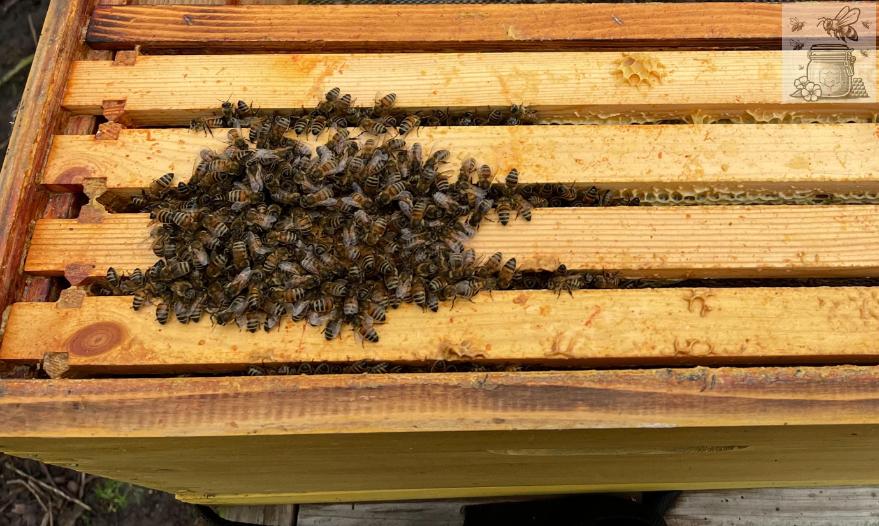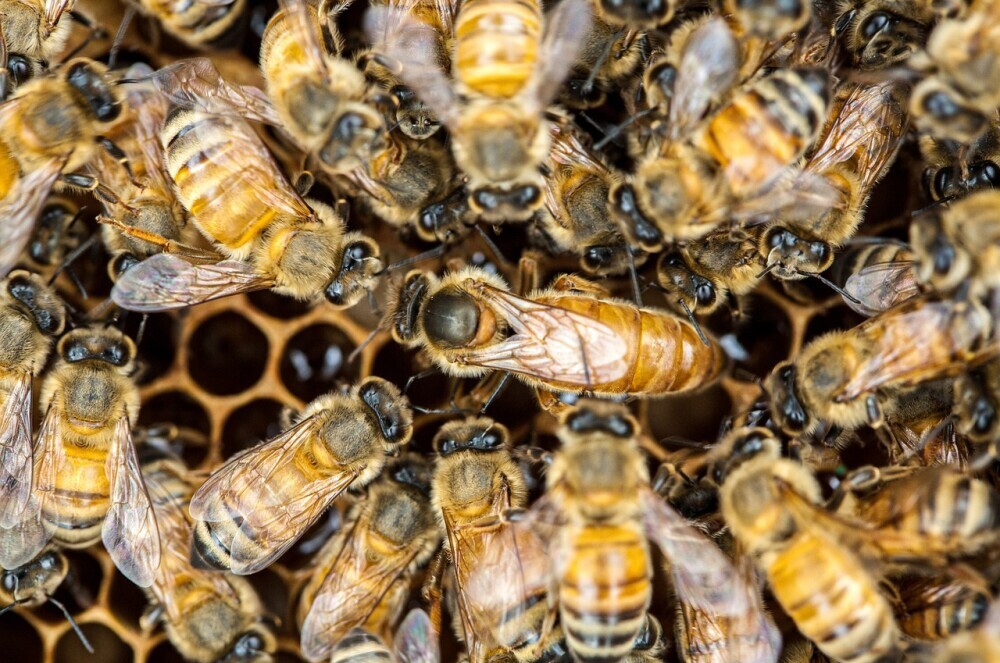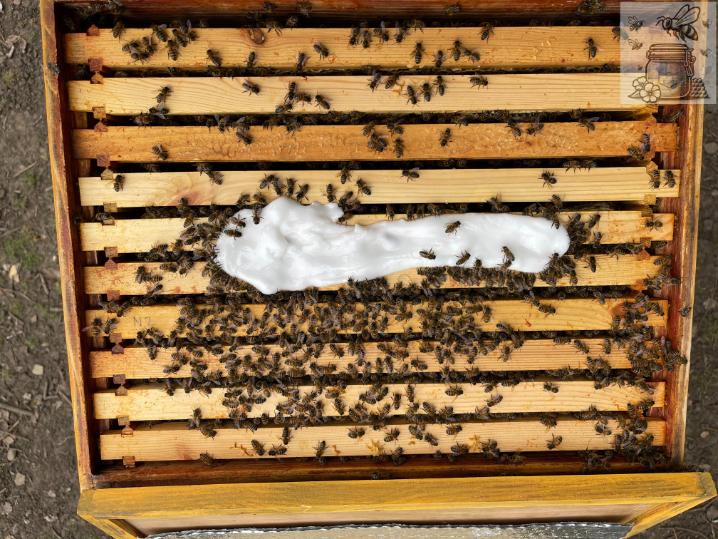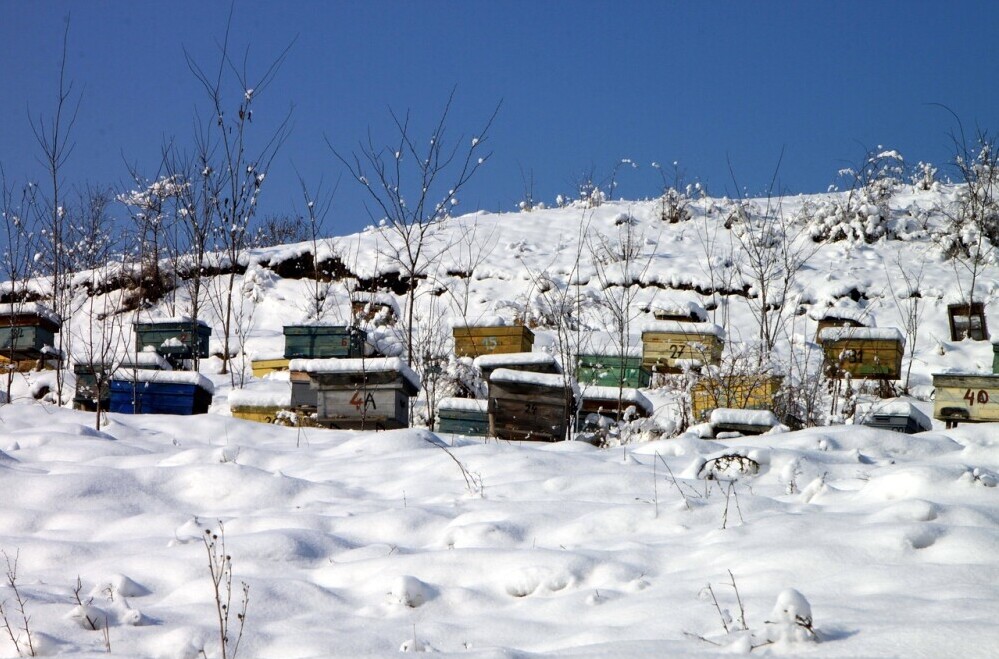As the days grow shorter and temperatures drop, honey bees don’t pack their bags and head for a tropical retreat. Instead, they embark on an intricate winter strategy right in the heart of their cozy hives.
Myth #1: Bees Migrate Like Birds
Contrary to popular belief, honey bees don’t migrate like birds seeking warmer climates. They stay put, relying on collective efforts to survive the winter chill.
The Winter Cluster
Honey bees are “social” creatures, and winter is their time to snuggle up together. They form what’s known as a “winter cluster” inside the hive. Imagine a buzzing ball of warmth, with thousands of bees huddled together, generating heat by shivering their flight muscles.

Honey bees engage in a remarkable behaviour known as clustering. During the coldest months they form a tight ball within their hive. This isn’t just about staying cosy; it’s a survival strategy. The bees at the centre of the cluster are responsible for keeping the queen warm, which is critical, as a thriving queen is necessary for the survival of the colony.
Curiously, bees do not hibernate. Instead, they rely on their flight muscles acting as a tiny furnace, vibrating to produce heat. This generates enough warmth to maintain an internal hive temperature even when it is freezing outside.
Myth #2: Bees Hibernate Like Bears
No bear-like hibernation here! While honey bees slow down their activity, they remain active within the hive. Hibernation is reserved for other creatures.
Keeping Cosy
To stay warm, bees rotate from the outer edges of the cluster to the inner core, taking turns on the chilly perimeter. The queen resides in the centre, receiving the VIP treatment, surrounded by her loyal attendants.

Myth #3: Bees Live Off Honey All Winter
While honey is indeed their winter fuel, bees don’t indulge in a three-month honey feast. They carefully ration their stored honey, regulating consumption to make it last until spring.
Winter Foraging? Not Quite
Honey bees don’t embark on foraging adventures during winter. They rely on the carefully stored honey reserves and, if needed, nibble on emergency winter provisions provided by their diligent beekeeper.

Myth #4: Bees Go Into a Deep Sleep
No beauty sleep for these little pollinators! Bees remain active, tending to the hive, and occasionally venturing out on cleansing flights when the weather permits.
Clever Insulation
Hives are winter-ready with insulation. In very cold areas beekeepers may add wraps or quilts to keep the colony snug. It’s like giving them a warm blanket for the chilly season.

Winter Survival Tactics
Bees face challenges like varroa mites and potential food shortages in winter. That’s where a savvy beekeeper steps in, monitoring, and providing support to ensure the colony’s well-being.
In essence, the winter abode of honey bees is a hive of activity, warmth, and survival strategies. As the snow blankets the landscape, the hive becomes a winter wonderland where bees demonstrate their remarkable resilience.
So, the next time you wonder where honey bees go in winter, picture a bustling bee metropolis, buzzing with life and energy, right in their cosy hive.
